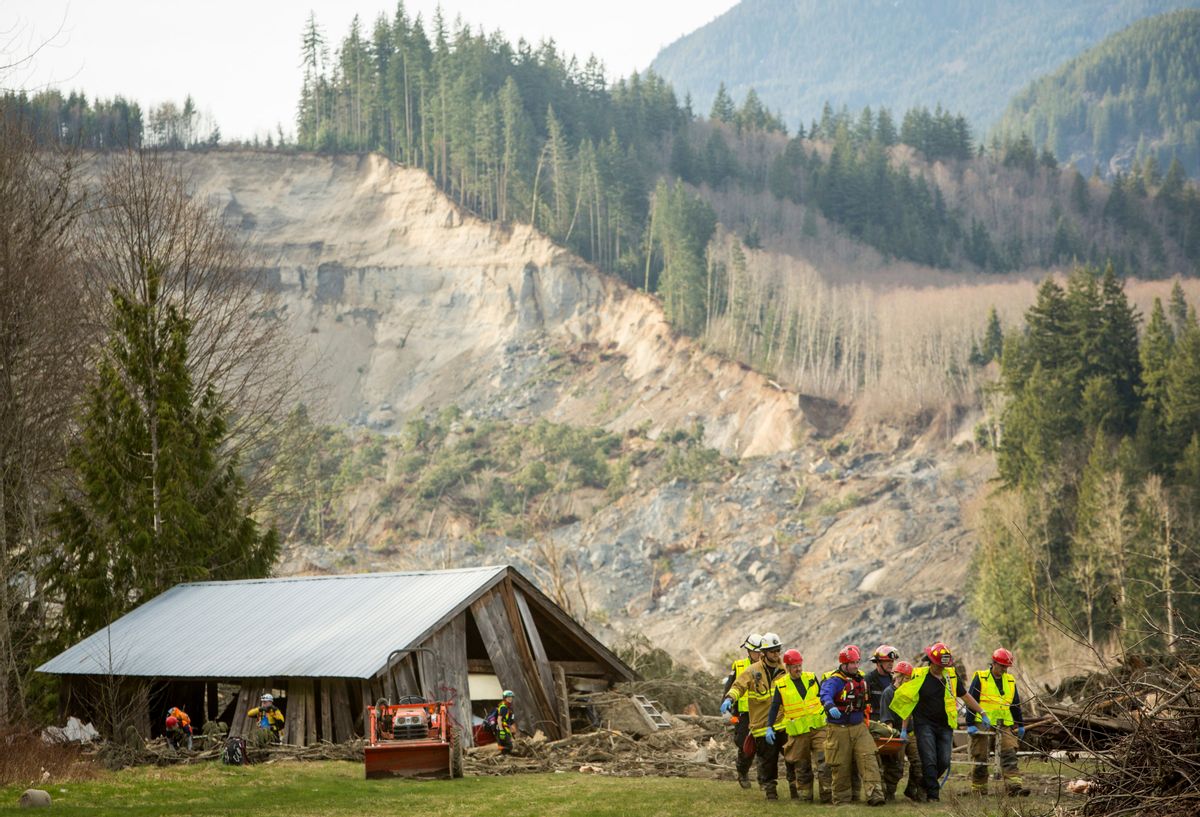The tragic landslide that's killed at least 16 people living on a Snohomish County hillside in Washington, while catastrophic, was one of those things that sometimes happens on such hillsides. Especially when there's heavy rainfall. But evidence is piling up to suggest that this particular disaster wasn't just an effect of the weather.
Scientists, the Seattle Times discovered, had been warning about the hillside's instability for decades. It turns out, scientists have also been warning about the logging activity that had been taking place on the plateau above the hillside. With some restrictions, the state allowed it to continue anyway. The Seattle Times, again:
...in recent decades, as the slope has become more unstable, scientists have increasingly challenged the timber harvests, with some even warning of possible calamity.
The state has continued to allow logging on the plateau, although it has imposed restrictions at least twice since the 1980s. The remnant of one clear-cut operation is visible in aerial photographs of Saturday’s monstrous mudslide. A triangle — 7½ acres, the shape of a pie slice — can be seen atop the destruction, its tip just cutting into where the hill collapsed.
Multiple factors can contribute to a slide.
With the hill that caved in over the weekend, geologists have pointed to the Stillaguamish River’s erosion of the hill’s base, or toe.
But logging can also play a role in instigating or intensifying a slide, by increasing the amount of water seeping into an unstable zone, according to an analysis of the watershed submitted to the state Department of Natural Resources (DNR).
In 1988, geologist Paul Kennard warned regulators that the removal of trees held “the potential for a massive and catastrophic failure of the entire hillslope.” That's the second time a scientist used the word "catastrophic" to describe the potential for disaster on that hillside; over the years, as the Times details, others echoed Kennard's concerns.
"People knew that this was a landslide-prone area," Snohomish County Emergency Management director John Pennington told reporters Wednesday. "Sometimes, big events just happen." But ignoring the factors that made this a higher likelihood -- and allowing people to build homes there anyway -- may not have been the best call.



Shares